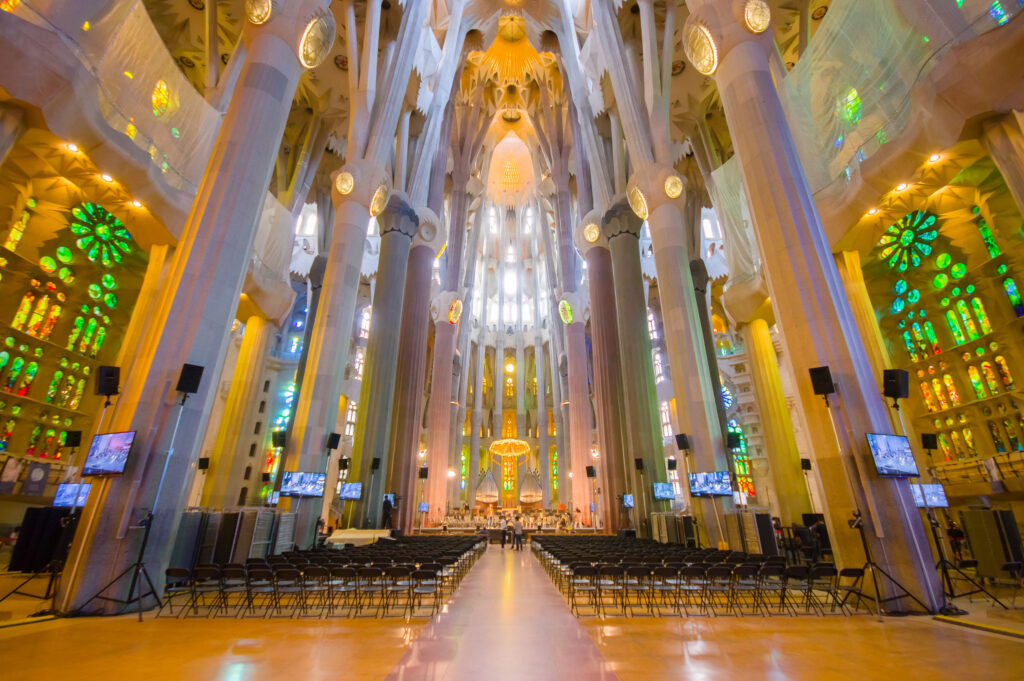
The Origins of Sagrada Familia
The Sagrada Familia, a breathtaking church in Barcelona, Spain, has a long and fascinating history. The project was initially inspired by a bookseller named José María Bocabella. He founded the Spiritual Association of Devotees of St. Joseph. After a trip to the Vatican in 1872, Bocabella returned with the idea of building a church inspired by the Basilica of Loreto.

Construction on the Sagrada Familia began in 1882, with architect Francisco de Paula del Villar designing a Gothic revival-style church. However, in 1883, the young Antoni Gaudí took over the project and radically transformed the design, incorporating his unique blend of Gothic and Art Nouveau styles.
Gaudí’s Vision and the Slow Progress
Gaudí devoted the rest of his life to the Sagrada Familia, but progress was painfully slow. The church relied solely on private donations, and the Spanish Civil War in the 1930s disrupted fundraising efforts. Additionally, Gaudí’s intricate and ambitious design, which included 18 towering spires, presented significant engineering challenges.

When Gaudí died in 1926, less than a quarter of the project was complete. After his passing, the work continued under the direction of his disciples, but wars repeatedly interrupted the construction, economic downturns, and political turmoil.
Setbacks and Destruction
The Spanish Civil War in 1936 was a particularly devastating blow to the Sagrada Familia project. Anarchists from the FAI set fire to the crypt and partially destroyed Gaudí’s original plans and models. This loss of critical information slowed the reconstruction and progress in the following decades.

Despite these setbacks, the architects and engineers involved in the project persevered. They used modern technologies and techniques to continue the construction. In the 1980s, the introduction of computer-aided design and computer numerical control (CNC) machines allowed for faster and more precise work.
The Race to the Finish Line
In recent years, the pace of construction has accelerated, and the Sagrada Familia has made significant progress. In 2010, the central nave vaulting was completed, and the main tasks since then have been the construction of the transept vaults and apse.

The project’s completion date has been a moving target. It is with initial estimates suggesting a 2026 finish, the centenary of Gaudí’s death. However, the COVID-19 pandemic caused some delays, and the latest forecast now points to a likely completion in 2026. It is an additional work on sculptures and decorative details that will continue until 2034.
Conclusion
The Sagrada Familia’s long and tumultuous history is a testament to the enduring vision and determination of its creators. Despite wars, economic hardships, and technical challenges, this architectural masterpiece continues to take shape, captivating the world with its breathtaking beauty and Gaudí’s unparalleled genius. As the completion date draws near, the Sagrada Familia stands as a symbol of human perseverance and the power of art to transcend time and inspire generations to come.














